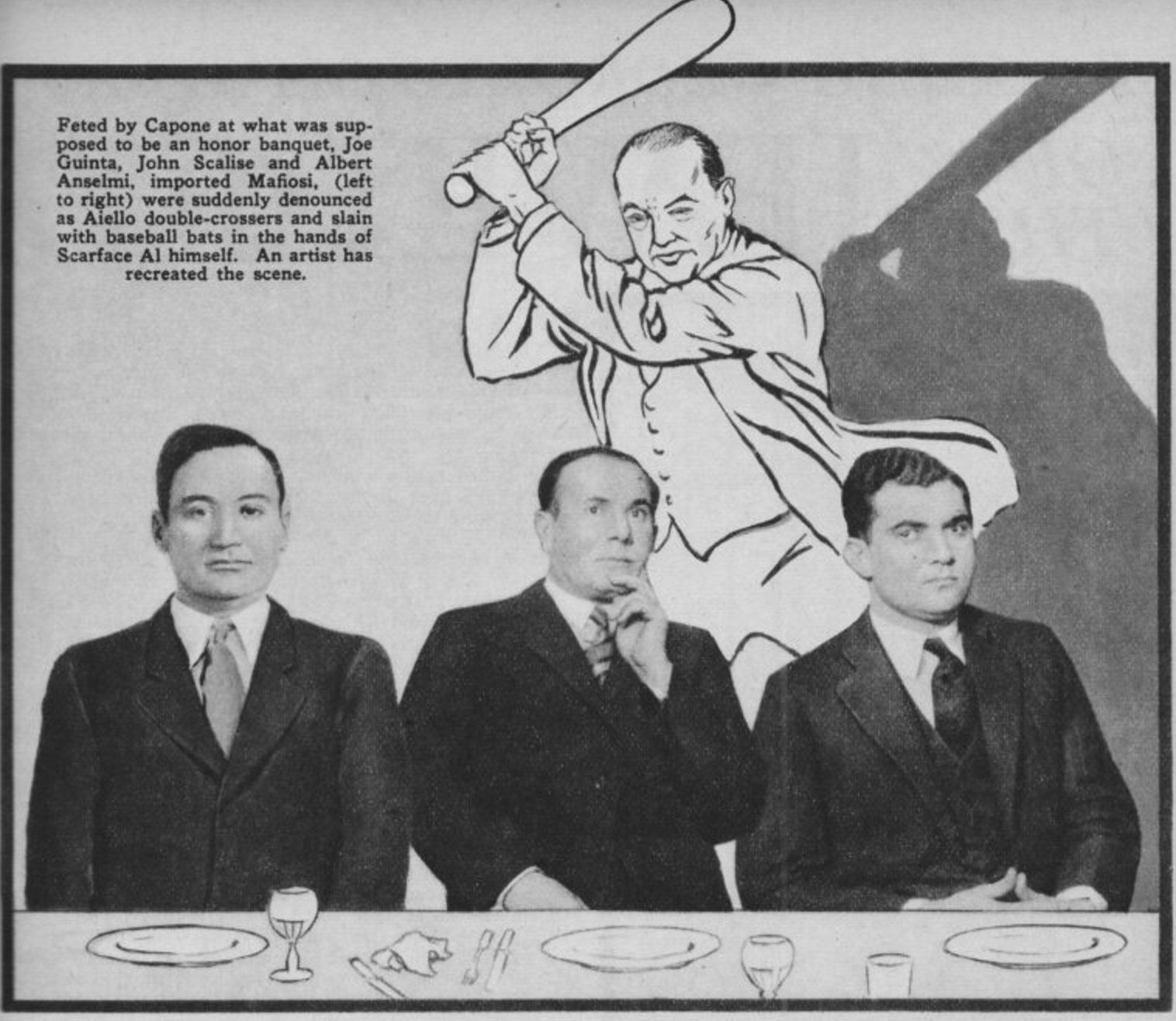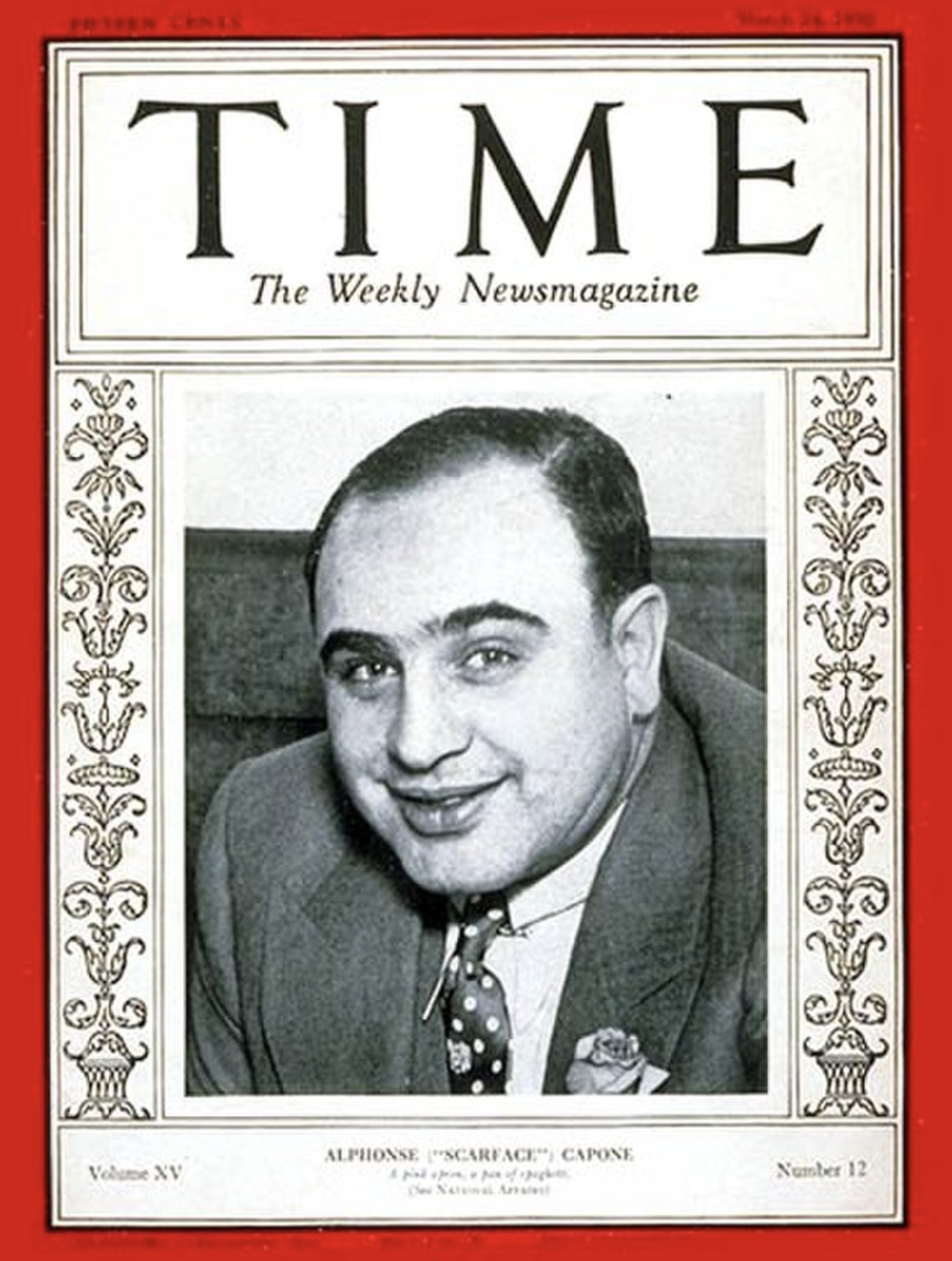16 Photos Remembering Al Capone’s Reign in Chicago
Carly Tennes
Published
12/04/2024
in
wow
Though Al Capone may have long served as one of America's most notorious mobsters, his legacy is shrouded in just as much myth as truth. But like most things in life, the facts surrounding Capone's time as Chicago's mob boss are a whole lot stranger than fiction.
From the Chicago Milk Wars to the Saint Valentine's Day Massacre, here are 16 photos remembering Al Capone's reign in Chicago.
- List View
- Player View
- Grid View
Advertisement
-
1. The Origins of Al Capone
 On January 17, 1920, the United States passed the Volstead Act, federally outlawing the sale, manufacture and transportation of alcohol. But while booze may have been banned, notorious crime boss Al Capone saw an opportunity: Making a whole lot of money with a major bootlegging business.
On January 17, 1920, the United States passed the Volstead Act, federally outlawing the sale, manufacture and transportation of alcohol. But while booze may have been banned, notorious crime boss Al Capone saw an opportunity: Making a whole lot of money with a major bootlegging business. -
2. Climbing The Ranks
 Long before Capone gained infamy as Chicago’s most notorious prohibition-era gangster, he got his start in New York City. Born in Brooklyn to Italian immigrants, Capone was a smart child, albeit a troublemaker, taking on odd jobs throughout his community — and even enjoying a two-year stint in semi-professional baseball. Capone’s organized crime career began when he joined the James Street Boys gang and met legendary crime boss Johnny Torrio. The pair quickly built a rapport and in 1919, Torrio sent Capone to Chicago, tasking him with managing one of his brothels.
Long before Capone gained infamy as Chicago’s most notorious prohibition-era gangster, he got his start in New York City. Born in Brooklyn to Italian immigrants, Capone was a smart child, albeit a troublemaker, taking on odd jobs throughout his community — and even enjoying a two-year stint in semi-professional baseball. Capone’s organized crime career began when he joined the James Street Boys gang and met legendary crime boss Johnny Torrio. The pair quickly built a rapport and in 1919, Torrio sent Capone to Chicago, tasking him with managing one of his brothels. -
3. Sweet Home Chicago
 Not long after relocating to the Second City, prohibition hit, prompting Capone to launching a large-scale bootlegging business. Relying on both notably violent tactics as well as his friendships with local law enforcement and then-Chicago mayor, William Hale Thompson, Capone climbed the ranks, ultimately replacing Torrio as boss following his retirement. By 1930, Chicago’s Crime Commission named him as “Public Enemy Number One.”
Not long after relocating to the Second City, prohibition hit, prompting Capone to launching a large-scale bootlegging business. Relying on both notably violent tactics as well as his friendships with local law enforcement and then-Chicago mayor, William Hale Thompson, Capone climbed the ranks, ultimately replacing Torrio as boss following his retirement. By 1930, Chicago’s Crime Commission named him as “Public Enemy Number One.” -
4. Baseball Bat Baloney
 Though rumors swirled that Capone’s weapon of choice was a baseball bat, a trope that appeared in pop culture during and long after his reign, experts say there’s no tangible evidence of this.
Though rumors swirled that Capone’s weapon of choice was a baseball bat, a trope that appeared in pop culture during and long after his reign, experts say there’s no tangible evidence of this. -
5. Playing Coy
 By this point, Capone had reached celebrity status and garnered reputation for loving women, outlandish outfits, cigars and all the finer things in life. As such, Capone was often asked about his line of work. He handled this questions like any good crime boss would. “I am just a businessman, giving the people what they want,” he once famously said.
By this point, Capone had reached celebrity status and garnered reputation for loving women, outlandish outfits, cigars and all the finer things in life. As such, Capone was often asked about his line of work. He handled this questions like any good crime boss would. “I am just a businessman, giving the people what they want,” he once famously said. -
6. Got Milk?
 With prohibition rumored to be coming to an end, Capone was looking for new ways to wet customers’ whistles and keep his business afloat. As such Capone decided to buy a dairy company. Using the company’s existing setup and tapping home delivery drivers rather than union workers to distribute the product, they were able to keep prices extremely low. After trying — and failing — to reach a deal with the dairy union leader, violence ensued, leading to smashed windows, shady deals and even a bombing.
With prohibition rumored to be coming to an end, Capone was looking for new ways to wet customers’ whistles and keep his business afloat. As such Capone decided to buy a dairy company. Using the company’s existing setup and tapping home delivery drivers rather than union workers to distribute the product, they were able to keep prices extremely low. After trying — and failing — to reach a deal with the dairy union leader, violence ensued, leading to smashed windows, shady deals and even a bombing. -
7. The Saint Valentine’s Day Massacre
 On February 14, 1929, several men dressed as police officers opened fire on seven gangsters working under George “Bugs” Moran and Chicago’s Irish Mafia.
On February 14, 1929, several men dressed as police officers opened fire on seven gangsters working under George “Bugs” Moran and Chicago’s Irish Mafia. -
8. Massacre Mysteries
 While the details of what, exactly happened in the now-razed North Side garage are still largely unknown — “What we do know is seven men were gunned down that morning,” said John Russick of the Chicago History Museum — Capone is largely believed to be responsible for the attack. Three of the mobster’s associates were arrested in connection to the crime, but two were killed before they had their day in court.
While the details of what, exactly happened in the now-razed North Side garage are still largely unknown — “What we do know is seven men were gunned down that morning,” said John Russick of the Chicago History Museum — Capone is largely believed to be responsible for the attack. Three of the mobster’s associates were arrested in connection to the crime, but two were killed before they had their day in court. -
9. Bugs Speaks Out
 Following the not-so-mysterious murders, Moran spoke to journalists about the massacre. “Only Capone kills like that,” he said days after the incident. Naturally, Capone fired back, famously stating that “the only man who kills like that is Bugs Moran."
Following the not-so-mysterious murders, Moran spoke to journalists about the massacre. “Only Capone kills like that,” he said days after the incident. Naturally, Capone fired back, famously stating that “the only man who kills like that is Bugs Moran." -
10. The End of an Era
 By 1930, the Chicago Crime Commission reached out to then President Herbert Hoover to take down Capone, who was already being investigated for tax evasion.
By 1930, the Chicago Crime Commission reached out to then President Herbert Hoover to take down Capone, who was already being investigated for tax evasion. -
11. Eliot Ness
 Prohibition agent Eliot Ness was tasked with spearheading this investigation. As a part of the U.S. Treasury Department, Ness took down several illegal bootlegging operations, leading to millions in lost income for Capone. After allegedly turning down a bribe for $2,000 a week to overlook the Chicago crime boss’s operation, Ness earned both him and his team of agents the nickname of the “Untouchables.”
Prohibition agent Eliot Ness was tasked with spearheading this investigation. As a part of the U.S. Treasury Department, Ness took down several illegal bootlegging operations, leading to millions in lost income for Capone. After allegedly turning down a bribe for $2,000 a week to overlook the Chicago crime boss’s operation, Ness earned both him and his team of agents the nickname of the “Untouchables.” -
12. Arrest and Conviction
 Though Capone had been arrested several times throughout his crime career, he plead guilty to tax evasion and 5,000 violations of the Volstead Act in 1931. That October, he was sentenced to 11 years in prison for the tax evasion charges.
Though Capone had been arrested several times throughout his crime career, he plead guilty to tax evasion and 5,000 violations of the Volstead Act in 1931. That October, he was sentenced to 11 years in prison for the tax evasion charges. -
13. Prisoner 85
 After serving time at a prison in Atlanta, Capone arrived at San Francisco’s infamous Alcatraz prison in 1934. Known as Prisoner 85, Capone’s time behind bars was a lot more lax than his days running the Chicago mob. Described as a “model prisoner” by the History Channel, Capone spent his days reading, composing music and and completing his chores.
After serving time at a prison in Atlanta, Capone arrived at San Francisco’s infamous Alcatraz prison in 1934. Known as Prisoner 85, Capone’s time behind bars was a lot more lax than his days running the Chicago mob. Described as a “model prisoner” by the History Channel, Capone spent his days reading, composing music and and completing his chores. -
14. No Special Privileges
 “Al Capone gets no more privileges than the rest, except that he does not get beaten or thrown into the dungeon,” an inmate told journalists. “He has too much political influence for that.”
“Al Capone gets no more privileges than the rest, except that he does not get beaten or thrown into the dungeon,” an inmate told journalists. “He has too much political influence for that.” -
15. Al in Alcatraz
 But even with this new zen outlook on life, Capone still occasionally got in trouble, including an incident in which he hit a fellow prisoner in the head with a bedpan.
But even with this new zen outlook on life, Capone still occasionally got in trouble, including an incident in which he hit a fellow prisoner in the head with a bedpan. -
16. Later Life and Death
 By the time Capone was released from jail in 1939, Capone’s untreated syphilis had made him incredibly sick, leaving him unable to reclaim his role as mob boss. He died on January 25, 1947, his death certificate denoting that he was “retired.”
By the time Capone was released from jail in 1939, Capone’s untreated syphilis had made him incredibly sick, leaving him unable to reclaim his role as mob boss. He died on January 25, 1947, his death certificate denoting that he was “retired.”
- NEXT GALLERY
-

- 50 Morning Randoms to Reboot With
The Origins of Al Capone
On January 17, 1920, the United States passed the Volstead Act, federally outlawing the sale, manufacture and transportation of alcohol. But while booze may have been banned, notorious crime boss Al Capone saw an opportunity: Making a whole lot of money with a major bootlegging business.
On January 17, 1920, the United States passed the Volstead Act, federally outlawing the sale, manufacture and transportation of alcohol. But while booze may have been banned, notorious crime boss Al Capone saw an opportunity: Making a whole lot of money with a major bootlegging business.
16/16
1/16









0 Comments